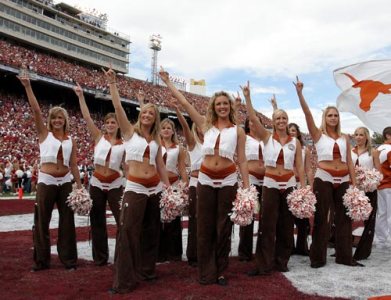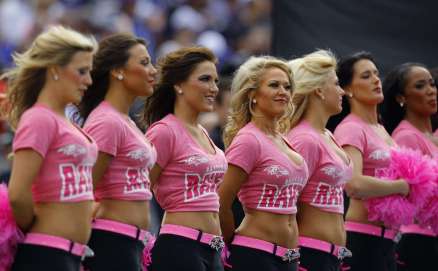By: Todd M. Schoenberger, @TMSchoenberger, @JonesFallsPub
Ah, the holiday season. The time of year for some of you to make your list, while being extra careful who checks it twice.
For those who find that loving feeling with someone other than the spouse, it’s time to pay up. No, I’m not talking about divorce, alimony, child support, etc., etc., etc.; I’m talking about the gift for the mistress.
Oh no. Or is it, oh yes.
 Regardless of your morals, religious commitments and yadda, yadda, yadda, the mistress is expecting a present worthy of, you know, epic appreciation. So, if you even have the resources to take on a mistress, well you’d better pony up if you want to keep her smiling.
Regardless of your morals, religious commitments and yadda, yadda, yadda, the mistress is expecting a present worthy of, you know, epic appreciation. So, if you even have the resources to take on a mistress, well you’d better pony up if you want to keep her smiling.
And, I’m talking diamonds and luxury items—not a new Dyson.
It wasn’t always this way for the secret lover, though. The Great Recession a few years ago meant great disappointment in terms of gift-giving for the lady on the side. Men generally stayed away from having a torrid love affair, and opted to be the wholesome man everyone thinks they are, rather than getting trapped into paying thousands of dollars on gifts from Hermes, Bulgari or Prada.
But times, they are a changing. The GDP report released Thursday morning shows the economy grew at a very healthy 3.5 percent, and the guy who recently won the Presidential Election is likely to bring the roaring 80’s back to the USA. Reagan 2.0 will lead to the ultimate proxy for a healthy economic environment: Spending on a mistress.
Men are going all out this holiday season for their lovers, as many feel more confident in their personal economic situation. Like one Wall Streeter who, obviously, spoke on the condition of anonymity said to me: “My girlfriend isn’t stupid. She watches FOX Business. She knows what the market has done since the Election and is expecting a luxurious gift and a Vespa. Good thing my wife only watches The Today Show.”
Unfortunately for some of you out there, AshleyMadison.com is no more. The company completely rebranded itself from a service promoting infidelity into an innovative, open- minded dating service company, named Ruby Life. Open-minded still seems to be stepping over a line, but that’s a topic to tackle at another time.
minded dating service company, named Ruby Life. Open-minded still seems to be stepping over a line, but that’s a topic to tackle at another time.
Ashley Madison did leave us with some excellent metrics, however, before shuttering. In a 2014 survey, the company was able to obtain some excellent subscriber data on mistress spending during the holidays. And, the numbers are definitely an “eye” opener.
According to the former company, the mistress always receives the “best” gifts. Men generally spend under $100 on wives, but well over $300 on mistresses. And these same men are 47 percent more likely to buy their mistress diamonds and luxury items than their brides.
Brutal!
And what’s worse for the wife is men are 35 percent more likely to buy their spouse items of necessity: tech products, cleaning supplies, an ice scraper for the car; whereas, the top mistress gifts are expensive jewelry, sexy lingerie, fashion accessories (can you say Hermes Crossbody Bag), technology and vacations/getaways.
No wonder AshleyMadison.com would experience a huge spike in new registrations following the holiday season! I suppose the wives wanted to flip the role and receive luxury items next season. Makes you wonder which company will fill the gap and step in to fulfill this much-desired service.
So being a former Wall Streeter (no, that is not my quote above but it wasn’t hard to get a former colleague to spill the beans!), let’s talk about making money. If anybody has the chutzpah, I’d suggest launching a hedge fund investing in “lover stocks.” Here’s a couple to consider.
Hermes International (EPA: RMS) has the hots for profits. The stock has hearts a flutter with a pop of 24 percent in 2016, and the company’s leather-goods and saddlery revenue rose 15 percent over the summer, beating the 12 percent consensus. The company, as most luxury retailers, did experience a slowdown worldwide this year, but this drop presents a perfect opportunity for the future: Rapid growth.
And with the success of the stock in 2016, many investors are looking at Hermes as a long-term play as discretionary incomes rebound, thus enabling purchases of high margins items such as silk scarves and ties.
Next up has to be Tiffany (NYSE: TIF). The stock is up a toe-curling 27 percent in the prior six months and is expected to continue its upward trajectory leading into 2017. Tiffany’s third-quarter earnings release showed sales increased 1 percent, however, on the bottom line, net income rose 4.5 percent to $0.76 a share. Seeing the luxury market growing is another bullish signal for companies like Tiffany.
 It should also be noted how 90 percent of sneaky men prefer to pay for their mistresses’ presents in cash to avoid the incriminating paper trail. So, cash is king (and private) for some of these luxury retailers, like Hermes and Tiffany.
It should also be noted how 90 percent of sneaky men prefer to pay for their mistresses’ presents in cash to avoid the incriminating paper trail. So, cash is king (and private) for some of these luxury retailers, like Hermes and Tiffany.
There you have a couple of investment ideas to tie you up and consider for your infidelity investment portfolio. Happy holidays and seasons greetings to you, your wife, your mistress, and probably your soon-to-be divorce attorney!
Disclosure: The author does not own the stocks mentioned in the article and has never been a member of AshleyMadison.com.

 Alcohol aficionados like to point out the celebratory mood of many as being the reason for a pop in consumption as we close out the year; and that may very well be. But one thing is for certain: Regardless of the reasons, people love to drink during the holidays, and wine seems to be the beverage of choice.
Alcohol aficionados like to point out the celebratory mood of many as being the reason for a pop in consumption as we close out the year; and that may very well be. But one thing is for certain: Regardless of the reasons, people love to drink during the holidays, and wine seems to be the beverage of choice. With all of this fantastic data, one has to wonder how to invest and profit in an industry that brings so much joy to others.
With all of this fantastic data, one has to wonder how to invest and profit in an industry that brings so much joy to others.
 The most recent example of this is the activity taking place at the college (amateur) football level. Several marquee athletes—those with extremely bright futures in the professional football league—are voluntarily deciding to skip their team’s upcoming postseason bowl game and have chosen to focus on their primary goal: Increasing their position in the April 2017 NFL draft.
The most recent example of this is the activity taking place at the college (amateur) football level. Several marquee athletes—those with extremely bright futures in the professional football league—are voluntarily deciding to skip their team’s upcoming postseason bowl game and have chosen to focus on their primary goal: Increasing their position in the April 2017 NFL draft. in revenue with expenses of $37 million. Apple doesn’t even boast this kind of profitability.
in revenue with expenses of $37 million. Apple doesn’t even boast this kind of profitability. then why are people up in arms about it? The answer as it always is with anything, is money. It’s always about the money.
then why are people up in arms about it? The answer as it always is with anything, is money. It’s always about the money. I agree. Everybody is counting on each other. But it does seem in such a rich and vibrant industry, known as NCAA football, a select few take care of their own. And when the power begins to shift, change tends to occur. If the idea of skipping games and vacating teams becomes a stable trend, don’t be shocked to see the NCAA begin to reverse course and begin some sort of profit-sharing program for players.
I agree. Everybody is counting on each other. But it does seem in such a rich and vibrant industry, known as NCAA football, a select few take care of their own. And when the power begins to shift, change tends to occur. If the idea of skipping games and vacating teams becomes a stable trend, don’t be shocked to see the NCAA begin to reverse course and begin some sort of profit-sharing program for players. prior games. They’ll dissect and scrutinize every metric just to fill-in time prior to the next game, and repeat the cycle the following week. But once in a while, NFL stories take a turn and cause us to wonder why any of us really give a damn anymore.
prior games. They’ll dissect and scrutinize every metric just to fill-in time prior to the next game, and repeat the cycle the following week. But once in a while, NFL stories take a turn and cause us to wonder why any of us really give a damn anymore. video reviews and commercials, being in the stadium is even worse. Unless you’re being entertained by stunning cheerleaders or Frisbee-catching dogs, sitting in the stands during these so-called “breaks in the action” is torture. It seems sticking hot pins in your eyes would be more fun.
video reviews and commercials, being in the stadium is even worse. Unless you’re being entertained by stunning cheerleaders or Frisbee-catching dogs, sitting in the stands during these so-called “breaks in the action” is torture. It seems sticking hot pins in your eyes would be more fun. The league is currently in a $3.1 billion annual contract amongst the broadcast networks (ESPN, home of the Mike and Mike show, is responsible for $1.9 billion of this deal). CBS has a separate contract to broadcast Thursday night games, which is valued at $275 million. And DirectTV started a new eight-year deal this season, valued at $1.5 billion a year.
The league is currently in a $3.1 billion annual contract amongst the broadcast networks (ESPN, home of the Mike and Mike show, is responsible for $1.9 billion of this deal). CBS has a separate contract to broadcast Thursday night games, which is valued at $275 million. And DirectTV started a new eight-year deal this season, valued at $1.5 billion a year. If you think that’s bad, the idea (which is under serious consideration to be implemented in the 2017 season) of reviewing missed penalties should make the fans rethink their sporting passion. If the rule was implemented now, the missed call in the Minnesota/Dallas game would have gone to a review. Think about it: Considering every play has some sort of penalty—whether called or missed—could result in a review.
If you think that’s bad, the idea (which is under serious consideration to be implemented in the 2017 season) of reviewing missed penalties should make the fans rethink their sporting passion. If the rule was implemented now, the missed call in the Minnesota/Dallas game would have gone to a review. Think about it: Considering every play has some sort of penalty—whether called or missed—could result in a review.